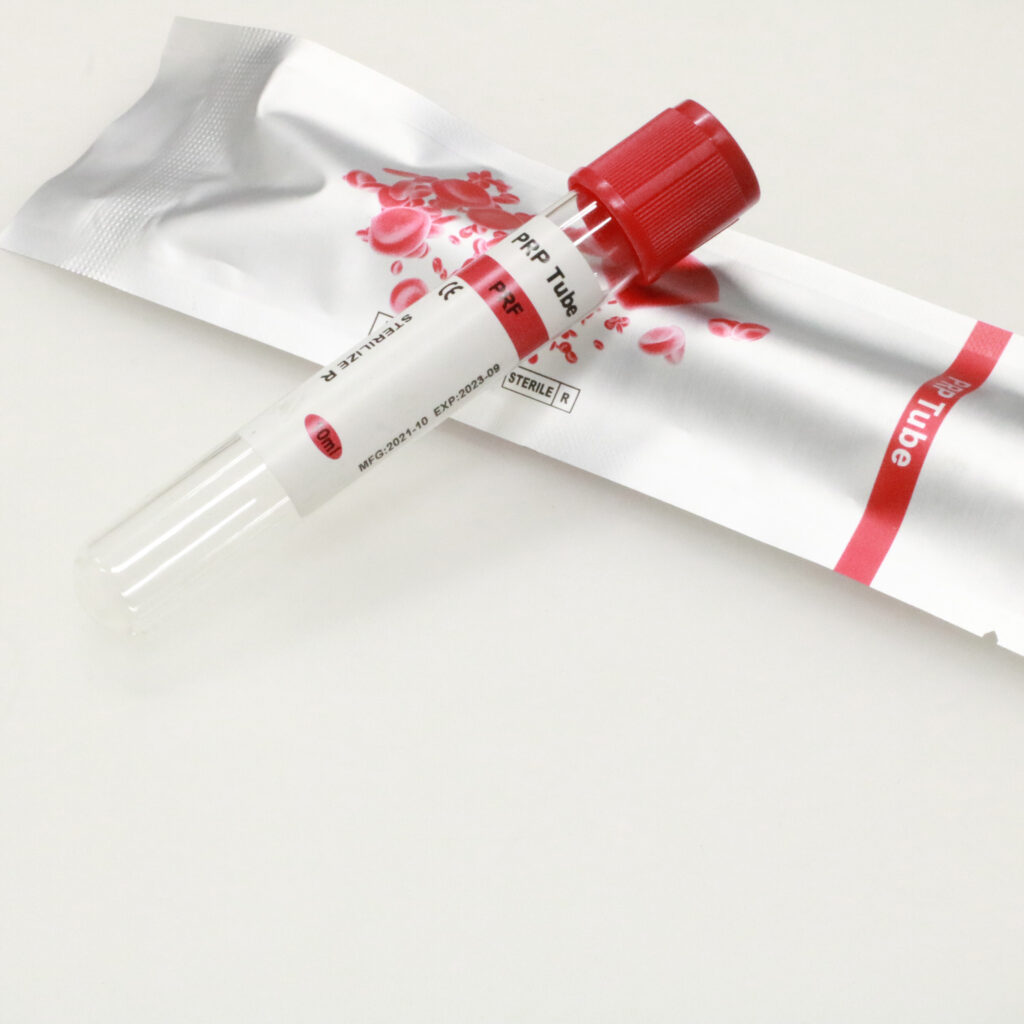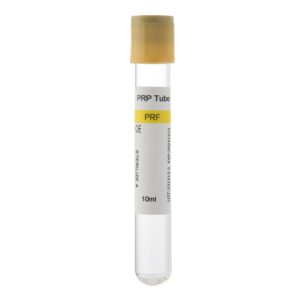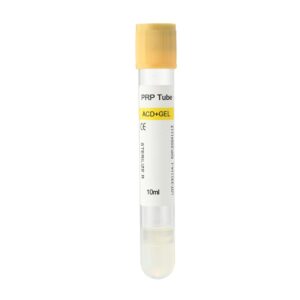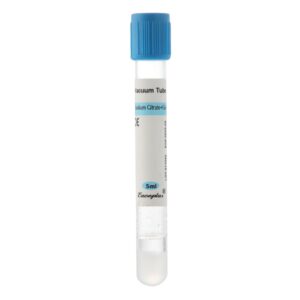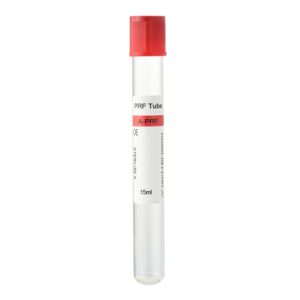In recent years, with the continuous advancement of medical aesthetic technologies, Platelet-Rich Fibrin (PRF) has emerged as a significant focus in the beauty industry. PRF, an autologous blood product, is derived from a patient’s blood, extracting platelets and fibrin, and is then utilized in cosmetic treatments. Its natural, safe, and effective characteristics have led to its increasingly widespread application in the field of aesthetics.
What is PRF?
Platelet-rich fibrin (PRF) is a concentrated autologous blood product containing high levels of platelets and fibrin. Unlike traditional blood products, PRF is prepared without adding any anticoagulants or other chemical components, relying entirely on the natural constituents of the patient’s blood. PRF is rich in various growth factors and cytokines, which play a crucial role in tissue repair and regeneration, significantly promoting cell proliferation, collagen synthesis, and angiogenesis.
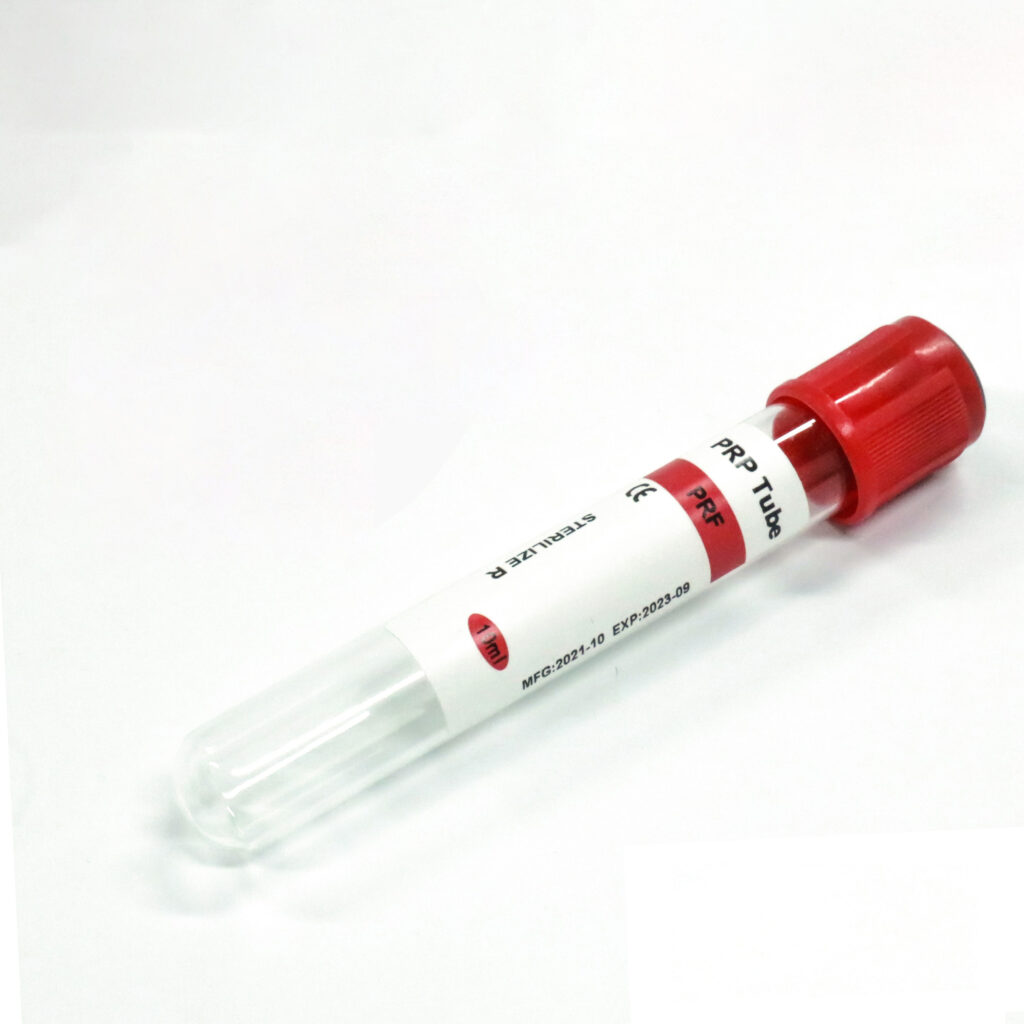
Preparation Process of PRF
The preparation process of PRF is relatively simple but requires strict control to ensure its quality and efficacy. The main steps are as follows:
- Blood Extraction: Draw a specific amount of blood (usually 10-20 ml) from the patient’s vein.
- Centrifugation: Place the blood in a centrifuge tube without additives and centrifuge it at a specific speed and time. Typically, the centrifugation process lasts for 10-15 minutes at approximately 3000 rpm.
- PRF Separation: After centrifugation, the blood separates into three layers: plasma on the top, a fibrin gel rich in platelets and white blood cells in the middle (PRF), and red blood cells at the bottom. The middle PRF gel is extracted for use in cosmetic treatments.
Application Process of PRF
The application of PRF in cosmetic treatments involves the following steps:
- Preparation of the Treatment Area: Before using PRF, clean and disinfect the treatment area to ensure sterile operation.
- PRF Injection: According to treatment needs, inject or apply PRF to the target area using microneedles or injections. Typical application areas include the face, neck, hands, and scalp.
- Post-Treatment Care: After PRF treatment, patients should follow the doctor’s instructions for subsequent care, such as keeping the treated area clean and avoiding direct sunlight to ensure optimal results.
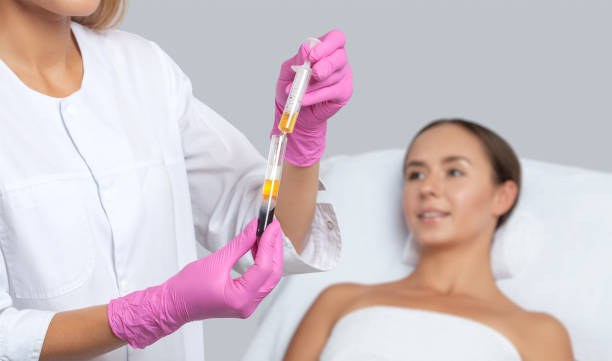
Suitable Candidates for PRF
PRF, as a safe and effective cosmetic treatment method, is suitable for the following groups:
- Individuals Seeking Facial Rejuvenation: Those looking to improve fine lines, wrinkles, and uneven skin tone through non-surgical means.
- Scar Repair Patients: Those needing to improve the appearance of surgical scars, acne scars, or other traumatic scars.
- Individuals with Eye Bags and Dark Circles: Those looking to reduce fine lines, eye bags, and dark circles around the eyes.
- People with Sparse Hair: Those wanting to promote hair regeneration and increase hair density through non-surgical means.
- Patients with Aging Hand Skin: Those wishing to improve skin laxity, wrinkles, and age spots on their hands.
Application of PRF in Facial Aesthetics
- Facial Rejuvenation: PRF can promote skin cell regeneration, increasing skin elasticity and firmness. Its growth factors stimulate collagen and elastin synthesis, improving fine lines and wrinkles for a youthful appearance. Post-PRF injection, the skin texture noticeably improves, appearing smoother and more elastic.
- Scar Repair: PRF is widely used in scar repair. By promoting fibroblast proliferation and collagen fibre reorganization, PRF effectively improves scar appearance and reduces scar visibility. PRF shows significant repair effects on both surgical and acne scars.
- Treatment of Eye Bags and Dark Circles: PRF can be injected into the eye area to utilize its regenerative and reparative abilities, reducing the formation of eye bags and dark circles and restoring smooth and firm skin around the eyes. Due to PRF’s natural components, patients experience quick recovery without significant swelling or bruising.
- Skin Filling: PRF can also be used as a natural filler for facial depressions, such as nasolabial folds and tear troughs, providing a natural filling effect and avoiding the side effects and rejection reactions of artificial fillers. PRF injections can naturally enhance facial contours, creating a more youthful appearance.
Application of PRF in Body Aesthetics
- Hair Regeneration: PRF is used to treat hair loss by injecting it into the scalp to promote follicle activation and hair regeneration, increasing hair density and thickness. The treatment is particularly effective for early-stage hair loss or mild hair loss.
- Hand Rejuvenation: With age, the skin on the hands loses elasticity and fat padding, showing clear signs of aging. PRF injections improve the texture and appearance of hand skin, restoring a youthful hand contour. Post-PRF treatment, the skin becomes smoother and firmer, reducing wrinkles and age spots.
Differences Between PRF and PRP
PRF (Platelet-Rich Fibrin) and PRP (Platelet-Rich Plasma) are both autologous blood products used in cosmetic and medical fields, but they differ significantly in preparation and composition. PRP preparation requires anticoagulants to prevent blood clotting during centrifugation and usually involves two centrifugation steps to separate platelet-rich plasma. In contrast, PRF preparation does not include anticoagulants and uses a single centrifugation step to obtain a gel rich in platelets and fibrin. Composition-wise, PRP mainly contains platelets and a small amount of white blood cells to release growth factors for tissue repair and regeneration. PRF, besides high platelet concentration, includes fibrin and more white blood cells, forming a three-dimensional network structure that aids in the slow release of growth factors, prolonging treatment effects. In contrast, PRF’s gel state allows for a more sustained release of growth factors, making it more suitable for filling and local application treatments.
Safety of PRF
Additionally, the preparation process of PRF does not involve any anticoagulants or chemical substances, reducing potential chemical contamination and side effects. Multiple studies have shown that PRF is very safe in both cosmetic and medical applications, with minimal side effects. Common reactions after PRF treatment, such as mild redness and bruising, typically resolve on their own within a few days without affecting the patient’s daily life.
Post-PRF Facial Care Guidelines
To ensure treatment effectiveness and accelerate recovery after PRF facial care, patients should follow these guidelines:
- Maintain Cleanliness: Keep the treated area clean to avoid infection. Use gentle facial cleansers to wash the face.
- Avoid Direct Sunlight: Avoid strong sunlight exposure for a few days post-treatment to prevent UV damage. Use high-SPF sunscreen products.
- Avoid Strenuous Exercise and High-Temperature Environments: Refrain from intense exercise, saunas, and steam baths for a few days post-treatment to reduce sweating and irritation.
- Follow Medical Advice: Adhere to the doctor’s recommendations for post-care, including using specific skincare products and attending necessary follow-ups.
- Avoid Irritating Cosmetics: Avoid using alcohol, fragrance, and other irritating components in cosmetics for a week post-treatment to reduce skin irritation. Avoid using products that cause dryness and irritation, such as those containing fruit acids or retinoic acid. During recovery, choose gentle, moisturizing skincare products to promote skin healing and regeneration.
- Get Adequate Rest and Maintain Healthy Habits: Adequate sleep and healthy living habits are crucial for skin repair and regeneration during recovery. Avoid staying up late, drinking alcohol, and smoking. Maintain a healthy diet rich in vitamins and antioxidants to support skin recovery.
- Monitor and Report Abnormal Reactions: Observe skin changes closely post-PRF treatment. If severe redness, pain, infection, or other abnormal reactions occur, contact the doctor promptly for treatment.
Conclusion
With ongoing research and technological advancements, the application prospects of PRF in the beauty field are broad. Additionally, standardized preparation and application procedures for PRF will help improve its safety and effectiveness in clinical practice. In summary, PRF, as an emerging cosmetic technology, is gradually transforming traditional aesthetic treatments with its natural, safe, and effective advantages, providing patients with more ideal beauty outcomes and treatment experiences. With continuous technological progress, PRF’s applications in aesthetics will undoubtedly become more extensive and profound.

